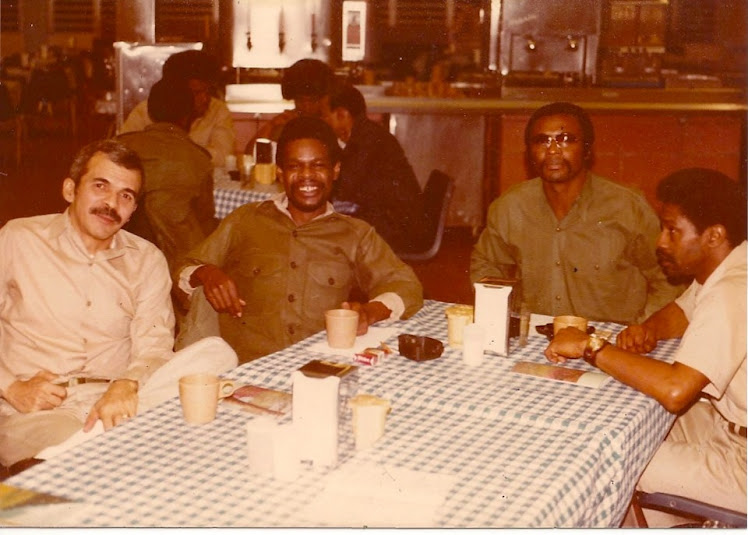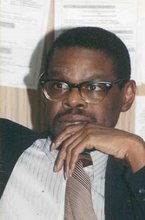To:
FWISD Walter Dansby & School Board Members
From:
Eddie Griffin, Child Rights Advocate
RE: Education as a Political
Football
Dear
Mr. Dansby,
As
a former PTA President, school system volunteer, and often critic of our
schools, I have spent the past 20 years working to improve our children’s
education. But, as I observed from the beginning, there have always been too
many cooks in the kitchen giving advice on the subject. As a consequence, we
were slow to embrace technology in the classroom; and once technological
advances helped us bridge the digital divide, we were slow to embrace online
education and using internet tools to help close the achievement gap. Also, we
have been hindered by low graduation rates due, in part, to a lack of classroom
management which led to the ill-fated creation of Zero Tolerance policies that has since evolved into the School-to-Prison Pipeline.
Now
one of the principal architects behind the failed zero tolerance policies, a
former covert CIA agent who uses early nineteenth century eugenic pseudoscience, is being cited for his ideas on how to
improve the education system in Texas. The most dangerous part about his ideas
is scapegoating the parents of students for their lack of involvement in the
school system and scapegoating the students for the breakdown in classroom
discipline. Blaming the parents and the students is a popular idea among the
more conservative members of our society, and even among some of us. This is
why author and consultant Charles A.
Murray is being cited in gubernatorial candidate Greg Abbott’s Pre-K Education plan.
If
Abbott’s plan looks and sounds good, it is only because it borrows from a smorgasbord
of ideas we have already thoroughly explored, particularly in our Malcolm
Baldridge Continuous Improvement
model. And, I have always been a believer in starting where we are, and not throwing
the baby out with the bathwater, lock, stock, and barrel, and starting over to reinvent
the wheel by siphoning off valuable resources for public education and putting them
into experimental charter school programs which, to date, have had dubious
mixed results. This new Pre-K Education
plan proposes to use Best Practices
in the classroom, which we have already been investigating, and it undermines
the structure of the public education system in favor of privatizing the system.
The
premise of these ideas, and the starting point of Charles Murray’s ideologies, begins
with this quote: “Family background has the most decisive
effect on student achievement, contributing to a large performance gap between
children from economically disadvantaged families and those from middle class
homes,” which is cited by Abbott from Murray's book Real Education.
Such a statement seems so simple and self-evident enough
that Mr. Abbott needed no Murray citation. But taking a closer look, we see
more of Mr. Murray’s eugenics idea than Mr. Abbott’s education plan.
Notice, it dichotomizes the “economically
disadvantaged families” from “middle class homes” and it
alludes to the popular stigma about the “family background” of the lesser being
the cause of the academic performance gap. Many people believe this. Therefore,
in order to address the ineffectiveness of the public school system, they
suggest that we should look at the dynamics within the dysfunctional poor
families and their background.
It is also interesting that Murray contrast the
term “economically
disadvantaged families” with “middle class homes”, with the latter being the ideal “home”, and
the other not really constituting what might be called a home. We, on the other
hand, never automatized family as an isolated unit in society, but always promoted
the concept “It takes a village to raise a child”. However, it is apparent that
not all people concur with the village concept. Murray’s ideas, from his
previously published works, promote the notion that genetics is the cause of
low academic achievement. And that is what separates us.
Therefore,
this makes us very suspicious of what Murray means by “family background”, and
what aspects of family background does he infers leads to low achievement in
academics, and why he states in Real Education argues that “students with lower IQ's are not as
educable
as smarter children and should be siphoned off to vocational programs instead
of sent to college”, and that “only 10 to 20 percent of young adults are
capable of doing college-level work.” Is he ignoring the empirical fact that a
good education can turn low-performing students into high achievers?
For
Murray, low-IQ is immutable because it is based on genetic factors, such as
brain size. However, these ideas of eugenic factors being attributable to the
cause of poverty and low-IQ and immoral parental lifestyles are not new. Thomas
Malthus, in his book Principle of
Population (1798), uses the same
pseudoscience in his argument against the Poor Laws of England, predicated upon
the Social Darwinian concept of “survival of the fittest”. He argued that the
poor people of England were genetically inferior to the rich. In later
revisions, he expanded this argument to include the darker races being inferior
to the lighter races, based upon a genetic hierarchy. Moreover, Malthus argued
that helping the poor through welfare would move valuable resources out the
economy, which would reduce money available to pay wages, and given to the
unworthy and unfit, which in turn, would provide incentives for laziness, immorality, increase in
the birth of illegitimate children, and discourage people from saving for old
age or illness.
Needless to say, these are popular notions in our society
today, especially in the stigmatization of poor minority families.
Notice the similarities between the Social Darwinians and
the Malthusian theories of the early nineteenth century, and the central thesis
of Charles Murray’s 1984 book Losing Ground:
American Social Policy, 1950–1980. In it, he
proposes all government welfare programs
should be abolished, supposedly because welfare
hurts the very people it was intended to help by “rewarding bad behavior” such
as “illegitimate babies.” He also called for ending
food stamp programs.
Murray's most famous and
controversial book, “The Bell Curve” (1994), co-authored with Richard Herrnstein, promoted racial eugenics theories claiming that
whites and Asians are genetically
superior in intelligence to blacks and Latinos.
The
Southern
Poverty Law center writes: “In Murray’s world, wealth and social power naturally
accrue towards a ‘cognitive elite’
made up of high-IQ individuals (who are overwhelmingly white, male, and from
well-to-do families), while those on the lower end of the eponymous bell curve form an ‘underclass’ whose misfortunes
stem from their low intelligence.
Recently
Murray wrote:
“No woman has
been a significant original thinker in any of the world's great philosophical
traditions… Women have produced a smaller number of important visual artists,
and none that is clearly in the first rank. No female composer is even close to
the first rank. Social restrictions undoubtedly damped down women’s
contributions in all of the arts, but the pattern of accomplishment that did
break through is strikingly consistent with what we know about the respective
strengths of male and female cognitive repertoires.”
The term Cognitive repertoires signify another
way of saying the genetic God-given brain size and capacity to learn.
According to some
research of Charles Murray’s own background, his career peaked in the Vietnam
War years (1965-71) in Thailand, first as a Peace Corps worker, and then, from
1968 onward, in a Pentagon-contracted counterinsurgency program run by the
American Institutes for Research (AIR), which operated under the cover of academic
anthropology research. In 1970, the New
York Review of Books exposed the AIR program in Thailand where
Murray worked in covert military
counter-insurgency program ran by the Department of Defense's research and
development agency ARPA, in cooperation with the CIA.
A 1970 Ramparts magazine investigation into counter-insurgency operations described it as a “behavior control” program through crop
destruction against a rebellious minority hill tribe, the Meo, during the
period that Murray participated in the counter-insurgency program in rural
Thailand.
And now, this man, Charles Murray,
with these ideas and pattern of practices, is being touted as an expert is
education. We should be offended and kicking ourselves for not doing better and
allowing these misguided notions to take parlance in our discussion on
Education.
It seems as though we have lost sight
on what is first and foremost: Education should teach our children HOW TO
THINK, to become problem-solvers, as oppose to those who believe education is about
teaching children WHAT TO THINK. With the ability to think, children of today
are empowered with the capabilities of solving tomorrow’s real world problems.
Knowing only what to think leads them down blind channels over which they have
no control or input, to a destination unknown.
The Charles Murray model
of Education is not about educating, but rather about controlling the system of
Education. Some people buy into the idea that regaining control of the
classroom is our most important objective. We think otherwise.
Sincerely,
Eddie Griffin




